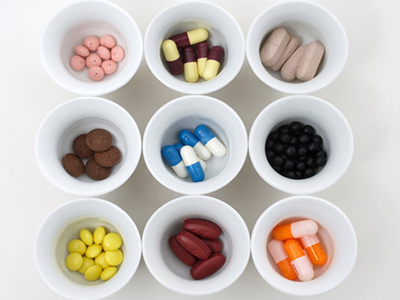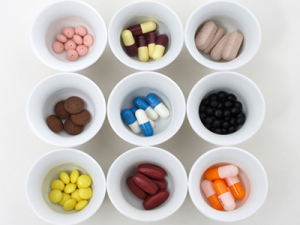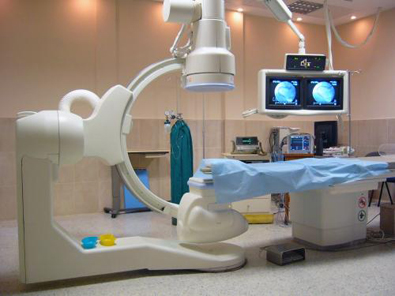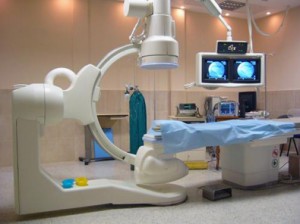
 Western medicine products is the kingpin in China’s import and export of medicines and health products, whose revenue accounted for as much as 59.55% in the total import and export volume of all the medical and health products. In 2011, import and export of China’s western medicine products maintained a good momentum of growth, with a total imports and exports of $ 43.639 billion, up by 31.44%. Among them, exports still account for the most of the turnovers with a total amount of $ 26.474 billion, occupies a proportion of 60.67%. Meanwhile, the import volume is 17.165 billion, occupies a proportion of 39.33% and constitutes a trade surplus of 9.809 billion US dollar, down by 2.181 billion US dollars.
Western medicine products is the kingpin in China’s import and export of medicines and health products, whose revenue accounted for as much as 59.55% in the total import and export volume of all the medical and health products. In 2011, import and export of China’s western medicine products maintained a good momentum of growth, with a total imports and exports of $ 43.639 billion, up by 31.44%. Among them, exports still account for the most of the turnovers with a total amount of $ 26.474 billion, occupies a proportion of 60.67%. Meanwhile, the import volume is 17.165 billion, occupies a proportion of 39.33% and constitutes a trade surplus of 9.809 billion US dollar, down by 2.181 billion US dollars.
Exports Grew by 25.68%
Despite these unfavorable factors, the global pharmaceutical market maintains a strong growth momentum, which provided favorable conditions for China’s western medicine products export. In 2011, China’s western medicine products to achieve a rapid growth, with an exports of $ 26.474 billion, up by 25.68%. Viewing from the monthly export, every month the total export maintained at 2.4 to 2.6 billion USD, except for in February, when the monthly export plummeted because of shorter month and Spring Festival vacation. And by the end of the year, the exports began to rise again, indicating a very strong potential growth.
Asia, Europe and North America maintain their market position. In 2011, the western medicine products in China had been exported to 193 countries (regions). Asia, Europe and North America remain to be the major market for western medicine products, which is 11.344 billion, 7.491 billion and 3.858 billion US dollars respectively, which in general took a proportion as high as 85.72%. Viewing from the perspective of increase momentum, China’s export to the three markets showed stable increase, up by 28.28% , 18.63% and 14.99% respectively. Besides, the export to Oceania and Latin America showed conspicuous growth, up by 183.97% and 37.94% respectively. All these show that the export of western medicine products in the emerging market is experiencing rapid growth.
In 2011, China’s top export destination countries are still mostly developed countries (regions). China’s top ten trading partners were the United States, India, Germany, Japan, South Korea, the Netherlands, Brazil, Italy, Spain and Australia, accounting for a proportion of 57.66%. Among the top 20 export countries, all but France showed steady trend of growth. And the export to Australia shows the largest amount of increase, amounting to 220.25%. Besides, export to Mexico, Indonesia, Brazil, Russia and other emerging pharmaceutical market shows significant growth, at 53.27%, 41.68%, 41.5% and 33.16% respectively, much more than the increase of the United States, Germany, Japan and other traditional markets, which reflect a good growth trend.
Enterprises Export Scale is Generally Small
n 2011, more than 10,000 Chinese enterprises are engaged in the export of western medicine products, and the exact number is 10,493, 1165 more than the previous year. All these reflect that we have an active export market. However, viewing in terms of the export revenue, the degree of export concentration is still not high, and the export still undergoes a minimum skill. 75% of enterprises with exports less than one million U.S. dollars. And the total exports of the top 20 companies accounted for only 15.6% of the total export of western medicine products, among which the largest enterprise exports were only $ 300 million.
Among the top 20 export enterprises, 17 are China’s western medicine production enterprises, and only 3 are foreign trade companies, its main export species concentrated in the larger categories such as heparin, vitamin C, citric acid, which also reflects that the export pattern of the leading categories of products would still maintain. In addition, the main products in the market changes directly affect the export performance of the leading enterprises, for instance, influenced by the re-rise of the export price of the heparin sodium, Hai Purui Pharmaceutical Co., Ltd. of Shenzhen City’s exports shrunk by 37 percent over the previous year, despite the fact that it was still the top enterprise of the western medicines. And price of Vitamin C also drops down, making relevant enterprises experience a slight decline in the export ranking.
Among all the export enterprises, private enterprises have taken a large part, the proportion of which is up to 75%; the number of foreign-funded enterprises and of state-owned enterprises accounting for 16% and 10% respectively. The export performance of private enterprises, with a number of advantages, completes the export volume of 51.38% and 48.60% of export amount; and although the foreign-funded enterprises and state-owned enterprises are of a limited number, it accounted for 30% and 20%. In contrast, the average the state-owned enterprises are stronger in operating capacity.
Viewing from the export condition of the provinces, municipalities, western medicine products export mainly concentrated in coastal areas. And the top five provinces in export volume are Jiangsu, Zhejiang, Shandong, Shanghai and Hebei province, total exports accounted for up to 68.4%.
Relatively Stable Pattern of Exports
In 2011 , the pattern of China ‘s western medicine exports experienced no change at all, among the three major export medical commodities, bulk drug is still the dominant products, with a export revenue of $ 22 billion , an increase of 26.58% , and the proportion is as high as 83.1%. Western medicine exports increased significantly, exports of which rose by 40.17 percent, up to $ 2.174 billion, taking a proportion of 8.21%. And the export of biochemistry medicine was $ 2.3 billion, an increase of 7.82%, taking a proportion of 8.69%.
In 2011, the export volume of raw material medicine in China was 5.8832 million tons, an increase of 27.8%, and the average export price of $ 3.74 / kg, decreased slightly by 0.95 percent compared with the previous year. From the point of view export varieties, all bulk drugs export commodities are included in the 225 Customs Code. Their export volume growth accounted for 56% while the exports revenue grew by 72.4%, showing an overall favorable growth. However, from the point of view of export price, Part of the large species, such as vitamin C, paracetamol, tetracycline derivatives and their salts, etc, decreased on an average ground, which also reflects that the grim future for the export price of bulk drug. Large numbers of the products maintain and develop their market at the expense of profit. Intense price competition comes from pressure from the international competitors, domestic overcapacity as well as low-price competition with each other. Without a strong governance means, it is difficult to change such a confusion in the order of operation.

In 2011, the export of Western medicine in China presents a significant decline in amount and increase in price, and the export volume of 207,000 tons, down by 69.83%, and the export price of $ 10.5 / kg, a year – on – year surge of 364.58%. The reason of this situation is mainly because the export structure has undergoing exchanges. From the point of view of export varieties, a total of 65 Western medicine exports under the Customs Code, of which 74% of the varieties of exports grew under 8 Customs Code of Western medicine exports, which increased over 145 %. Penicillins, cephalosporins and other anti-infective drugs is still the flagship product of in the export of Western medicine, total exports of which amounting to $ 558 million, accounting for 25.65% of the exports of Western medicine in China.
On the contrary, things are quite the opposite with the biochemistry medicines. In 2011, although the export volume for biochemistry medicines increased, the price went down significantly, the annual export volume jumped to 94.22 with a total of 361,500 tons; the average export price fell by 44.49 percent to $ 6.36 / kg. The price drop in biochemistry medicines is mainly due to the fact the export volume of low-priced varieties will have an impact on prices.
Size of Imports Is Significantly Amplified
In 2011, China’s western medicine products has shown a strong growth in import, and the total import volume amounted to $ 17.165 billion, an increase of 41.43%, 16% higher than the export growth last year, which means that the policy shows effect in adjusting the management structure, expanding import, and maintaining the balance of trade development. in terms of the export in a single month, the average monthly imports amounted to $ 1.43 billion and the highest monthly import record in December reached 1.716 billion U.S. dollars. While the annual import trend showed a growth momentum among volatility.
Trade Volume and Price All Rose in the Three Major Markets
For a long time, Europe, Asia and North America has been the traditional markets of imported Western medicine products, 94.48% of the market share is highly concentrated in these three countries. In 2011, the overall pattern of imported western medicine products remain stable and the import turnover rose sharply. For instance, China imports from the European market and North American market increased by 44.31 percent and 37.68 percent respectively. Besides, trade volume and price all rose in the three major markets. The good news is that in 2011, China significantly increased its imports from the Middle East, Latin America, and Oceania, reaching 214.7%, 134.21% and 104.28% respectively. The import market becomes more and more diversified and is moving forward steadily.
In 2011 , China has imported Western medicine products from 88 countries (regions) , the top ten import trading partner are as follows: United States , Germany, Japan , France , Switzerland , Italy , UK , Sweden , Ireland and Belgium. And the cumulative proportion of imports from the 10 countries accounts for 71.7%. Among them, United States and Germany, the proportion of imports over 12 %, 12.96% and 12.39% respectively. China’s imports from these 10 countries experienced different degrees of growth. 80% of the country increased more than 30%, and in United Kingdom, Sweden, Ireland, the increase has been more than 70 %.
Import Business Concentration Is Relatively High
In 2011, a total of 6766 enterprises in China are engaged in Western medicine products imports, up by 4.43%. The top 10 enterprise imports accounted for 30.41%, among which 8 are foreign funded enterprises. In terms of turnover, AstraZeneca Pharmaceutical Co., Ltd. ranked the first with the imports amounted to $ 1.233 billion, an increase of 211.5%, which shows that the import business is not only high in the degree of concentration, but also single in their identity: almost all of the leading enterprises are foreign-funded.
Among all the import enterprises, 51.6 percent are foreign-funded. They have completed 31.04% of import volume and 62.85% of import turnover; private enterprises accounted for 38.4%. They have completed 39.23 % of the import volume and 20.11% of import turnover; and the proportion of state-owned enterprises is less than 10 percent. They completed 29.71 percent of the import volume and 15.91% of import turnover. Thus, the volume of imports on the state-owned , private and foreign-funded ” enterprises basically constitute one-third of the total, but foreign funded enterprises imported featured and patent bulk drugs, formulations, whose product value and grade was significantly higher than those of private and state-owned enterprises, therefore, they served as the main force in the import.
In 2011, China’s imports of Western medicine products showing an overall upward trend, with imports volume edging up by 1.57 percent and the average import price rising sharply to 41.43 percent. Three categories of imported goods are all demonstrating this characteristic: bulk drugs imports edged up by 1.53 percent, whose average import price increased by 22.05% ; Western medicine imports grew by 9.23% , with average price rose by 46.91% ; as for biochemistry products, its imports decreased slightly by 4.74% and the average import price rose by 50.75% . The average price of the western medicine rose sharply, on one hand, it reflects that China’s capability of drug consumption and the increase in the new, patent medicine. On the other hand, the rising costs of pharmaceutical raw materials and the characteristics of bulk drugs demand growth had an impact on import price, too.
Imports of Western Medicine Amounts to Half of the Total Imports
In 2011, China imported a total of 325 varieties of western medicine products (according to the classification of the Customs Code), Western medicine imports accounted for 47.17%, almost half of the total imports. Pharmaceutical raw materials, accounting for 40.92%, and the biochemical products account for 11.91%.
Among the top ten varieties of import, 60% were Western medicine or biochemical medicine products, which accounted for 47% of the total imports of western medicine products. The largest import variety is drugs with fixed doses, import of which has amounted to $ 4,708,000,000. As for antisera and other blood fractions and modified immunological products, the total import amount to $ 1.296 billion, ranking second, which forms a stark contrast with bulk drug, China ‘s leading export products. Among the top ten varieties, 90% experienced an increase, 60% ??of the products increased over 10%; and 70% raised the average import price, indicating that the leading varieties are in good operating condition.
In short, in 2011, China’s import and export of western medicine products have maintained a rapid growth, and the import growth has markedly accelerated, making the trade balance achieved remarkable success.
Export Growth Faced with Challenges
In 2012, foreign trade of western medicine products in Chin still faces greater challenges
Firstly, as the global economy is slow in its recovery, the European and the U.S. pharmaceutical market shows limited growth. a certain degree of uncertainty still exists in the market’s prospect and the continued growth of the international pharmaceutical market demand is still not optimistic, there has been increased risk in China’s pharmaceutical export.
Second, India and other major competitors greatly devaluate their currency, while Chinese Yuan still experiences appreciation pressure, which further undermines the competitive advantages of our western medicine products in international market.
Third , on the one hand , the domestic environmental standards has been improved, the cost of raw materials, labor, tended to rise, and will continue to push higher the cost of China’s western medicine products; on the other hand, caused by low-cost competition, the production overcapacity of the bulk raw material products will bring China Western medicine products export to a dilemma.
In addition, the rising recent foreign trade frictions, and the rise of foreign trade protectionism, will also pose serious challenges to China’s exports.
Taking the above-mentioned factors into consideration, in 2012 the export situation of China’s western medicine products is not optimistic. However, due to the international market’s demand of pharmaceutical products, combined with the fact that the market position of these products would be unchanged in a short period, the western medicine products in China is expected to grow, but the growth rate will be possibly down to less than 20%. However, with the growth in the domestic consumer demand and improvement in spending power, as well as the rapid expansion of the pharmaceutical market, the export will be further propelled. It is expected that China’s western medicine products growth in imports is likely to remain above 20%, and the import growth would continue to be higher than export growth.

 According to 2011 BP World Energy Statistics, in 2010, the world’s coal production reached a total of 7.273 billion tons, of which China’s coal production was 3.24 billion tons, accounting for 48.3% of total world coal production (annual growth rate and proportion calculated according to oil equivalent). Viewing from the regional perspective, Asia-Pacific region, North America and European and Eurasian region are the world’s three major coal producing regions, amounting to 94.6% of the total world production. Among them, the Asia-Pacific region accounted for 67.2%, North America 15.9% and European and Eurasia region 11.5%. In terms of countries, China and the United States accounted for 63.1 percent of world production, followed by India, Australia, Russia, Indonesia , South Africa , Germany , Poland and Kazakhstan?ranking from the third to the tenth place.
According to 2011 BP World Energy Statistics, in 2010, the world’s coal production reached a total of 7.273 billion tons, of which China’s coal production was 3.24 billion tons, accounting for 48.3% of total world coal production (annual growth rate and proportion calculated according to oil equivalent). Viewing from the regional perspective, Asia-Pacific region, North America and European and Eurasian region are the world’s three major coal producing regions, amounting to 94.6% of the total world production. Among them, the Asia-Pacific region accounted for 67.2%, North America 15.9% and European and Eurasia region 11.5%. In terms of countries, China and the United States accounted for 63.1 percent of world production, followed by India, Australia, Russia, Indonesia , South Africa , Germany , Poland and Kazakhstan?ranking from the third to the tenth place.









